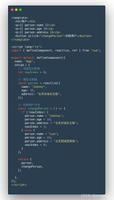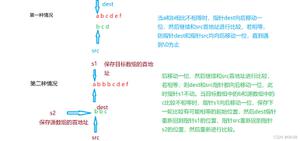浅谈实现vue2.0响应式的基本思路
最近看了vue2.0源码关于响应式的实现,以下博文将通过简单的代码还原vue2.0关于响应式的实现思路。
注意,这里只是实现思路的还原,对于里面各种细节的实现,比如说数组里面数据的操作的监听,以及对象嵌套这些细节本实例都不会涉及到,如果想了解更加细节的实现,可以通过阅读源码 observer文件夹以及instance文件夹里面的state文件具体了解。
首先,我们先定义好实现vue对象的结构
class Vue {
constructor(options) {
this.$options = options;
this._data = options.data;
this.$el = document.querySelector(options.el);
}
}
第一步:将data下面的属性变为observable
使用Object.defineProperty对数据对象做属性get和set的监听,当有数据读取和赋值操作时则调用节点的指令,这样使用最通用的=等号赋值就可以触发了。
//数据劫持,监控数据变化
function observer(value, cb){
Object.keys(value).forEach((key) => defineReactive(value, key, value[key] , cb))
}
function defineReactive(obj, key, val, cb) {
Object.defineProperty(obj, key, {
enumerable: true,
configurable: true,
get: ()=>{
return val
},
set: newVal => {
if(newVal === val)
return
val = newVal
}
})
}
第二步:实现一个消息订阅器
很简单,我们维护一个数组,这个数组,就放订阅者,一旦触发notify,订阅者就调用自己的update方法
class Dep {
constructor() {
this.subs = []
}
add(watcher) {
this.subs.push(watcher)
}
notify() {
this.subs.forEach((watcher) => watcher.cb())
}
}
每次set函数,调用的时候,我们触发notify,实现更新
那么问题来了。谁是订阅者。对,是Watcher。。一旦 dep.notify()就遍历订阅者,也就是Watcher,并调用他的update()方法
function defineReactive(obj, key, val, cb) {
const dep = new Dep()
Object.defineProperty(obj, key, {
enumerable: true,
configurable: true,
get: ()=>{
return val
},
set: newVal => {
if(newVal === val)
return
val = newVal
dep.notify()
}
})
}
第三步:实现一个 Watcher
Watcher的实现比较简单,其实就是执行数据变化时我们要执行的操作
class Watcher {
constructor(vm, cb) {
this.cb = cb
this.vm = vm
}
update(){
this.run()
}
run(){
this.cb.call(this.vm)
}
}
第四步:touch拿到依赖
上述三步,我们实现了数据改变可以触发更新,现在问题是我们无法将watcher与我们的数据联系到一起。
我们知道data上的属性设置defineReactive后,修改data 上的值会触发 set。那么我们取data上值是会触发 get了。所以可以利用这一点,先执行以下render函数,就可以知道视图的更新需要哪些数据的支持,并把它记录为数据的订阅者。
function defineReactive(obj, key, val, cb) {
const dep = new Dep()
Object.defineProperty(obj, key, {
enumerable: true,
configurable: true,
get: ()=>{
if(Dep.target){
dep.add(Dep.target)
}
return val
},
set: newVal => {
if(newVal === val)
return
val = newVal
dep.notify()
}
})
}
最后我们来看用一个代理实现将我们对data的数据访问绑定在vue对象上
_proxy(key) {
const self = this
Object.defineProperty(self, key, {
configurable: true,
enumerable: true,
get: function proxyGetter () {
return self._data[key]
},
set: function proxySetter (val) {
self._data[key] = val
}
})
}
Object.keys(options.data).forEach(key => this._proxy(key))
下面就是整个实例的完整代码
class Vue {
constructor(options) {
this.$options = options;
this._data = options.data;
this.$el =document.querySelector(options.el);
Object.keys(options.data).forEach(key => this._proxy(key))
observer(options.data)
watch(this, this._render.bind(this), this._update.bind(this))
}
_proxy(key) {
const self = this
Object.defineProperty(self, key, {
configurable: true,
enumerable: true,
get: function proxyGetter () {
return self._data[key]
},
set: function proxySetter (val) {
self._data[key] = val
}
})
}
_update() {
console.log("我需要更新");
this._render.call(this)
}
_render() {
this._bindText();
}
_bindText() {
let textDOMs=this.$el.querySelectorAll('[v-text]'),
bindText;
for(let i=0;i<textDOMs.length;i++){
bindText=textDOMs[i].getAttribute('v-text');
let data = this._data[bindText];
if(data){
textDOMs[i].innerHTML=data;
}
}
}
}
function observer(value, cb){
Object.keys(value).forEach((key) => defineReactive(value, key, value[key] , cb))
}
function defineReactive(obj, key, val, cb) {
const dep = new Dep()
Object.defineProperty(obj, key, {
enumerable: true,
configurable: true,
get: ()=>{
if(Dep.target){
dep.add(Dep.target)
}
return val
},
set: newVal => {
if(newVal === val)
return
val = newVal
dep.notify()
}
})
}
function watch(vm, exp, cb){
Dep.target = new Watcher(vm,cb);
return exp()
}
class Watcher {
constructor(vm, cb) {
this.cb = cb
this.vm = vm
}
update(){
this.run()
}
run(){
this.cb.call(this.vm)
}
}
class Dep {
constructor() {
this.subs = []
}
add(watcher) {
this.subs.push(watcher)
}
notify() {
this.subs.forEach((watcher) => watcher.cb())
}
}
Dep.target = null;
var demo = new Vue({
el: '#demo',
data: {
text: "hello world"
}
})
setTimeout(function(){
demo.text = "hello new world"
}, 1000)
<body>
<div id="demo">
<div v-text="text"></div>
</div>
</body>
上面就是整个vue数据驱动部分的整个思路。如果想深入了解更细节的实现,建议深入去看vue这部分的代码。
以上是 浅谈实现vue2.0响应式的基本思路 的全部内容, 来源链接: utcz.com/z/360969.html






